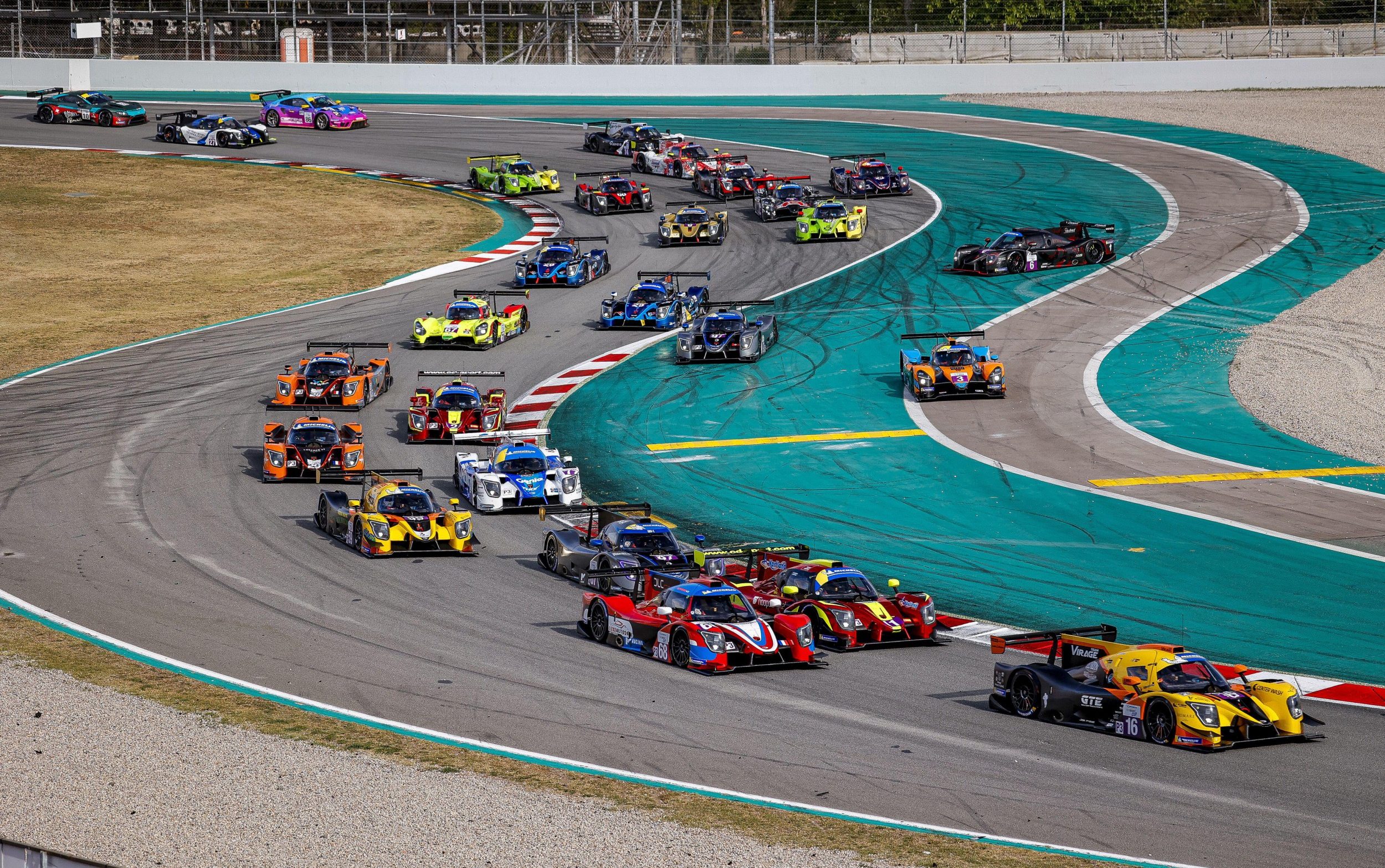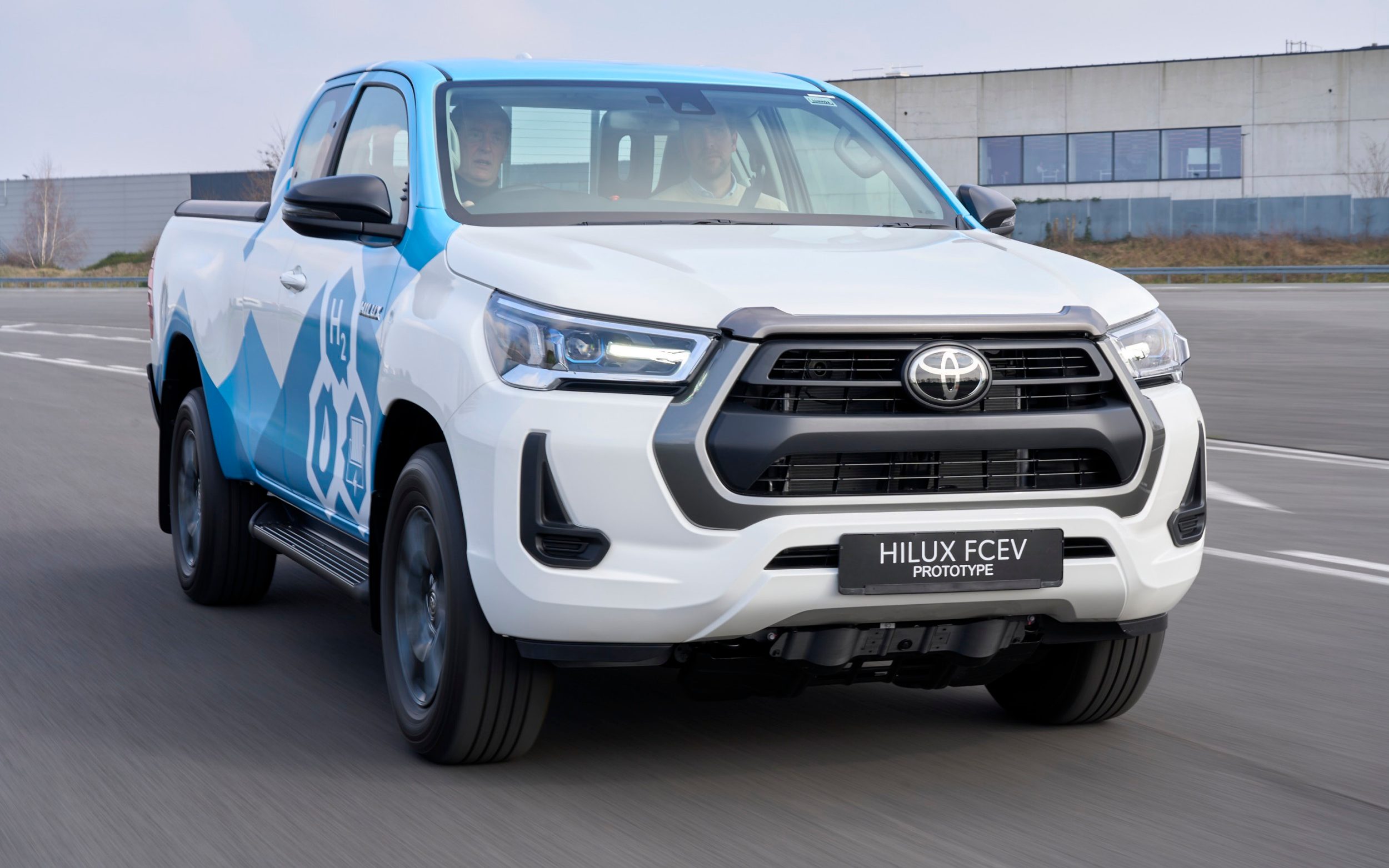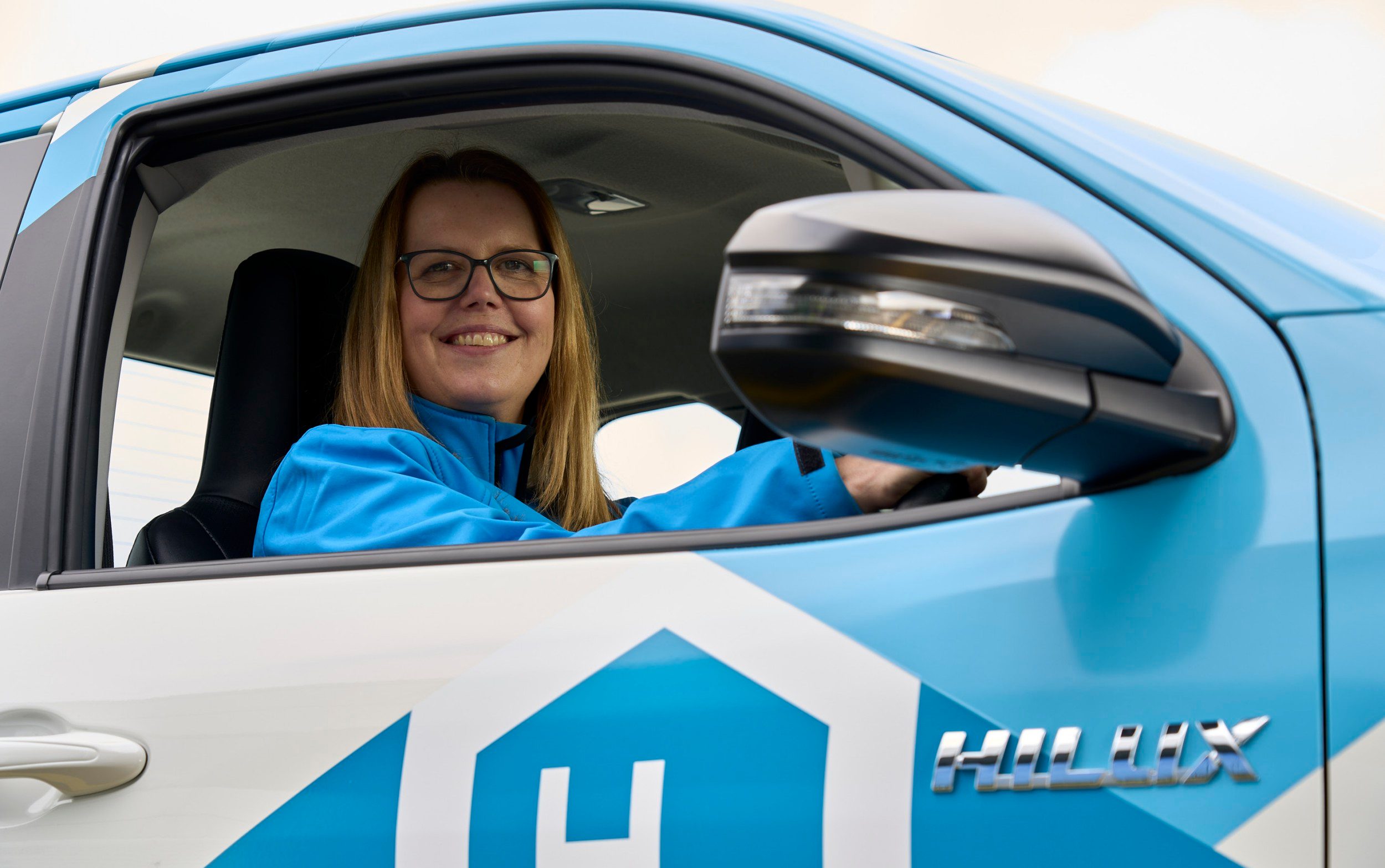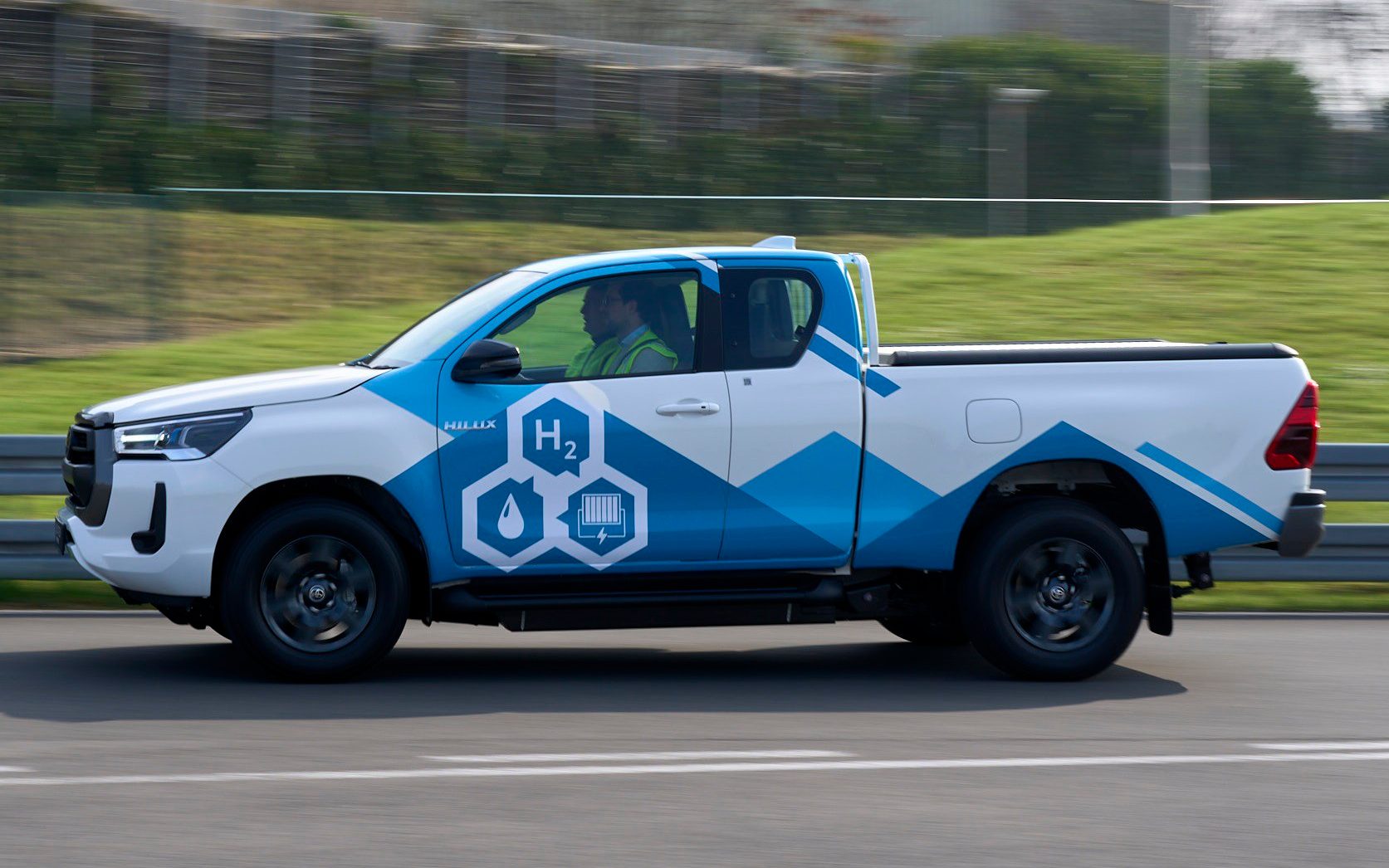Why we shouldn’t give up on hydrogen just yet

Hydrogen may soon be used as a fuel in the famed Le Mans 24-hour endurance race – Independent Photo Agency / Alamy
The twists and turns of Belgium’s Spa-Francorchamps circuit host the second European round of the World Endurance Championship on May 11, with the circus moving to France for the 24 Hours of Le Mans endurance classic on June 15/16. It’s a good series, exciting to watch and with a keen eye on technical innovation and new fuels.
In previous years the series has entertained alternative powertrains including, in 1963, the Rover-BRM gas turbine car and the 1993 flywheel-powered Chrysler Patriot (though it never ran at Le Mans), while in 2006 Audi’s R10 became the first diesel-powered car to win the twice-around-the-clock epic.
Now the series has its sights set firmly on hydrogen fuel burning in (relatively) conventional piston engines.
Last year Toyota debuted a new hydrogen racer while a hydrogen-fuelled Corolla did demonstration laps.
This year the tech moves on apace with Renault-owned Alpine’s Alpenglow, a swooping racer with a hydrogen-burning engine. It’s not just pre-race flimflam either; in the prospectus, Alpine states that the Alpenglow “evokes the possibility of a clean-emissions future for race cars but also for future generations of Alpine vehicles”.
While hydrogen power for passenger cars, either in fuel-cell vehicles or hydrogen piston engines, appears to have hit a wall, the commercial and construction industries along with the endurance racing world are looking at this lighter-than-air gas as a potential way of reducing CO2 emissions while avoiding the weight and range penalties of existing battery-electric technology.
Toyota’s groundbreaking Mirai saloon has been a financial disaster, largely because in the main the hydrogen supply market has not been forthcoming. It’s not quite the death knell for this pioneering attempt to provide a low-CO2 alternative to battery-electric, but the case for using fuel cells in passenger cars is diminished.
But the Japanese giant’s hydrogen research is far from finished, it has simply changed direction. Which is why I’m at Toyota’s Zaventem technical centre, sitting in a Hilux pickup that emits only hot water from its exhaust. So where does this fuel-cell-powered version of one of the world’s most popular pickups fit into the “it’s all over now” narrative?

The new hydrogen-powered Hilux at Toyota’s Zaventem technical centre
You can’t buy one of these British-built workhorses just yet, but the mood music from the world’s largest car maker is that one day, in the not-too-distant future, you will.
Is this a U-turn? Not really. Toyota never made any secret of its aim of providing fuel-cell power to marine, rail, bus and truck and commercial markets; industries where it simply isn’t viable to plug in machinery. It predicts a decent return on its considerable investment, time and expertise in developing hydrogen tanks, fuel cells, delivery systems and so on.
Under the skin
The fuel-cell Hilux has only rear-wheel drive, with its 180bhp/221lb ft Mirai motor bolted to the modified chassis featuring a beautifully engineered one-off rear suspension.
British engineer Katherine Chamberlain, a senior manager of new product development at Toyota UK, explains that while a 4×4 version is the ultimate target, practicality was equally important and simply adapting the Mirai’s rear-drive powertrain into the pickup was the main aim of the project.

Engineer Katherine Chamberlain behind the wheel of the Hilux
Typically for Toyota, a year-long feasibility study was undertaken in July 2022. The project cost has been £11.3 million, with £5.6 million in the form of a Government Alternative Propulsion grant and Toyota supplying parts, staff, premises and time to the value of £4.1 million.
Three high-pressure tanks carrying 5.6kg of hydrogen at 10,000psi (700 bar) provide a range of about 365 miles. The tanks sit in a fabricated cradle between the pickup’s chassis rails. The 171bhp fuel cell, air compressor, moisture management and inverters sit neatly under the bonnet.
So neatly, in fact, that you’d barely notice the way the hardware has been shifted around to accommodate the additional cooling a fuel cell system requires.
Practicality is further reduced by the small (1.24kWh) lithium-ion buffer battery sitting in a steel container behind the cab where it can be air cooled. But Chamberlain’s team did manage the key requirement of the market, which is a full one-tonne payload and sufficient width to accommodate a 1,200mm by 800mm Euro-standard pallet.
Inside there’s a drive-by-wire gear selector in the middle on a fabricated console and, like the best of prototypes, a large red button for the safety cut-off red button.
At the wheel
Time to discover what a bit of endeavour, know-how and determination can do. I had already driven a regular diesel 4×4 Hilux for comparison purposes. The lack of four-wheel drive in the fuel-cell version is obvious, but what is extraordinary is the strong and seamless pulling power from a standstill when, with a puff of steam from the exhaust, the pickup flies towards the horizon. And it will do this time after time, which is a testament to the skills of the development team under Chamberlain.
Similarly, the well-weighted steering and the progression of the major controls are notable. Above all it feels refined and ready for production, if heavy. Toyota isn’t saying what this concept FC Hilux weighs except to say it’s a lot lighter than an equivalent battery version. I reckon around 2.5 tonnes, maybe more. For comparison, the standard single-cab diesel weighs from 1,875-2,130kg.

‘The well-weighted steering and the progression of the major controls are notable,’ writes English
This is a snapshot, however, using what’s available on the shelf, with what the team call the 2.5-generation of Toyota’s production fuel cell. The latest generation-3 fuel cell is half the size of the previous unit, which was the size of an airline carry-on case. It also has stainless-steel separators instead of the old cell’s titanium ones, reducing cost substantially. Overall, the third-generation fuel-cell costs are said to be halved; additional benefits are a 20 per cent greater cruising range (due to greater efficiency) and a maintenance requirement reduced by 2.5 times.
Toyota has also been working on a series of shaped 10,000psi tanks; flat ones which can be fitted in place of a battery in an electric vehicle, saddle-shaped items which go around the propeller shaft in a rear-wheel-drive car. Engineers said they intend these to have at least as long a service life as the current rounded pressure vessels, which in Japan is 15 years by law.
Europe leads the way on hydrogen
Why is Toyota doing this? Because in Europe, unlike the UK, there is a hydrogen plan. The EU’s Green Deal, part of which was informally agreed last December, aims at decarbonising the European gas market with low-carbon gases including hydrogen.
While in 2022 hydrogen provided only two per cent of Europe’s energy consumption, with the vast majority derived from natural-gas fossil fuel, the EU plans to develop renewable hydrogen to the extent that by 2030 it will produce 10 million tonnes and import another 10 million tonnes.
As far as road fuels are concerned, the EU’s document A Hydrogen Strategy For A Climate-Neutral Europe states that hydrogen “can offer solutions for hard-to-abate parts of the transport system, in addition to what can be achieved through electrification and other renewable and low-carbon fuels”.
Hydrogen every 124 miles
The aim is to provide 700 bar hydrogen fuel on Europe’s motorway network at 124-mile (200km) intervals by 2030. The report is ambitious, but realistic, with an acknowledgement of the chicken-or-egg nature of hydrogen adoption, which has served so ill in the past, and a call for a combined approach and a different speed of adoption depending on each country’s industries and transport modes.
While the EU adoption vehicle is the European Clean Hydrogen Alliance, there are others including Hydrogen Europe, a coalition of hydrogen producers, users and vehicle makers seeking to explore and exploit market avenues in a variety of transport areas such as regular delivery runs by trucks.
Toyota’s equivalent is the strangely named Hydrogen Factory, not a refinery with hissing pipes, but a business unit dedicated to push forward the introduction of hydrogen fuel.
“We’re not actually making hydrogen,” explains Thiebault Paquet, the vice-president of Hydrogen Factory (Europe), “but we are overseeing Toyota’s hydrogen rollout in Europe. As well as providing the technology, we’re also acting as a sort of introduction agency where we introduce potential partners to each other.
“This is a technology which we will not be giving up on,” he adds.
Toyota is already talking to potential users including its own factories, which in Europe are responsible for up to 2,000 truck movements a day – Burnaston in Derby has 20 deliveries a day.
Olympic opportunity
There are currently about 3,350 fuel cell vehicles in operation in Europe, but the numbers are rising. Paris currently has 600 Mirai taxi cabs, with plans to double that number for this summer’s Olympic Games along with buses, trucks and vans. “There will be the legacy,” says Paquet. Hamburg in Germany also has a massive Mirai cab population.
The estimate of the number of hydrogen filling stations that will be in operation by 2030 differs, but Paquet says it must be realistic or the operators won’t make a return. “Estimates differ from 1,200 to 450, with 650 being a good useable number,” he says.
And as for the Hilux? Well, with large construction sites such as the Lower Thames crossing going for zero emissions power with green hydrogen, if you want to access the site with your tools this is just the ticket. As I learned from my drive of the JCB hydrogen van, operators are fed up with being accused of greenwashing due to charging their machinery with diesel-fuelled generators. They need sensible, sustainable solutions to working vehicles which don’t depend on an unreliable battery recharging network.
I wouldn’t hold your breath quite yet, but this Hilux pickup could well be at least part of the future.
Play The Telegraph’s brilliant range of Puzzles – and feel brighter every day. Train your brain and boost your mood with PlusWord, the Mini Crossword, the fearsome Killer Sudoku and even the classic Cryptic Crossword.
